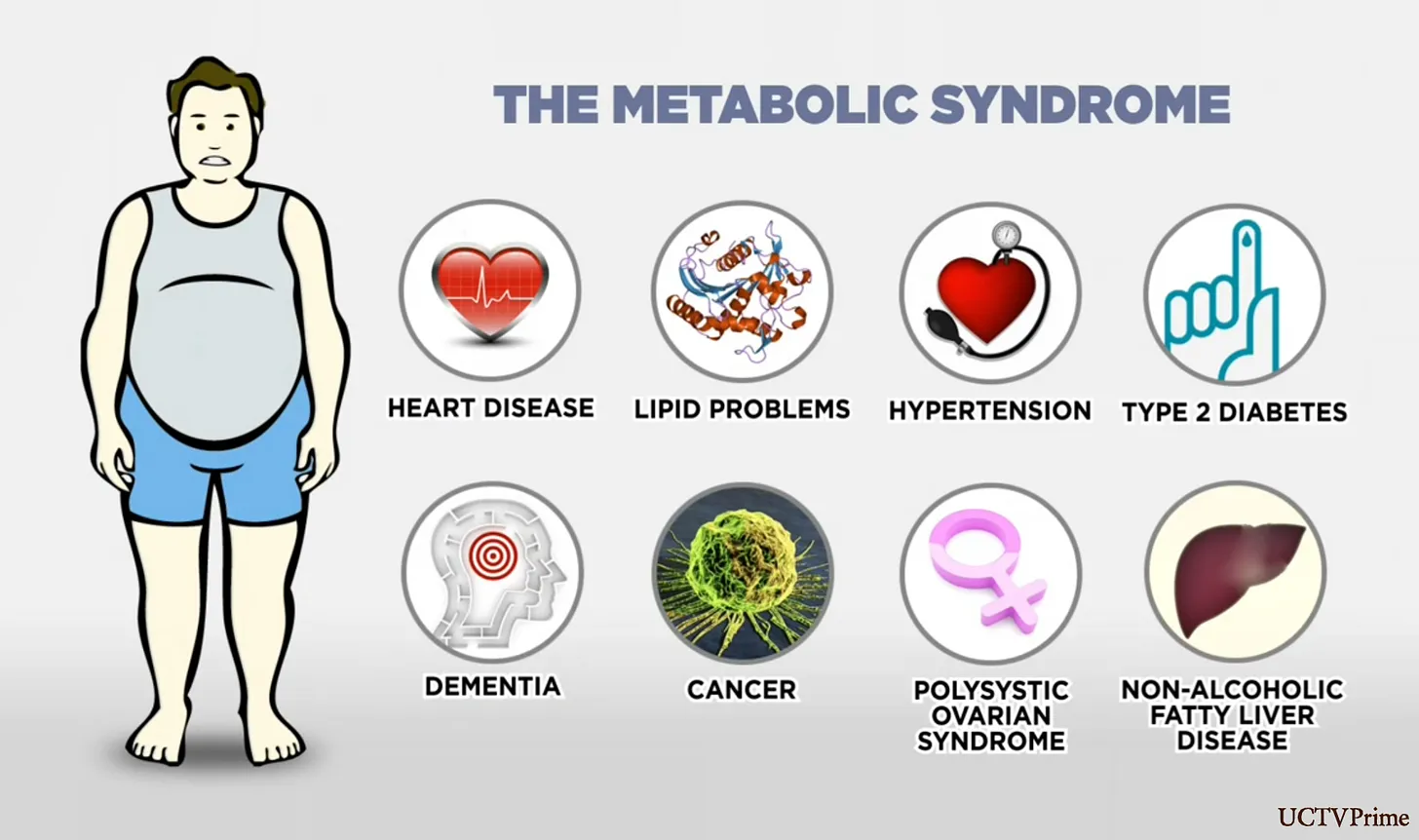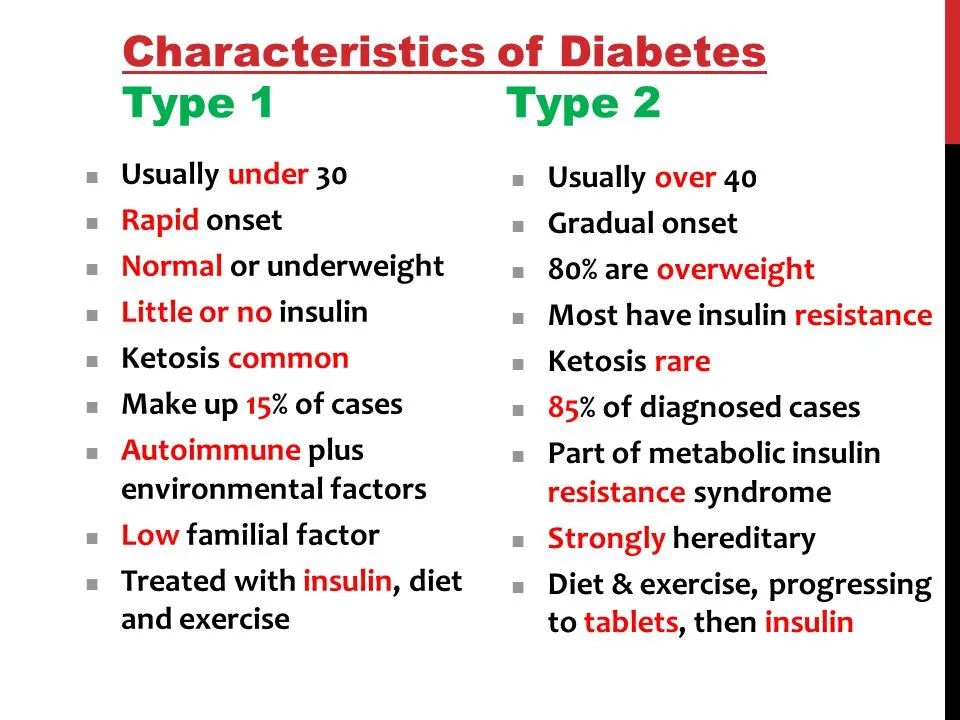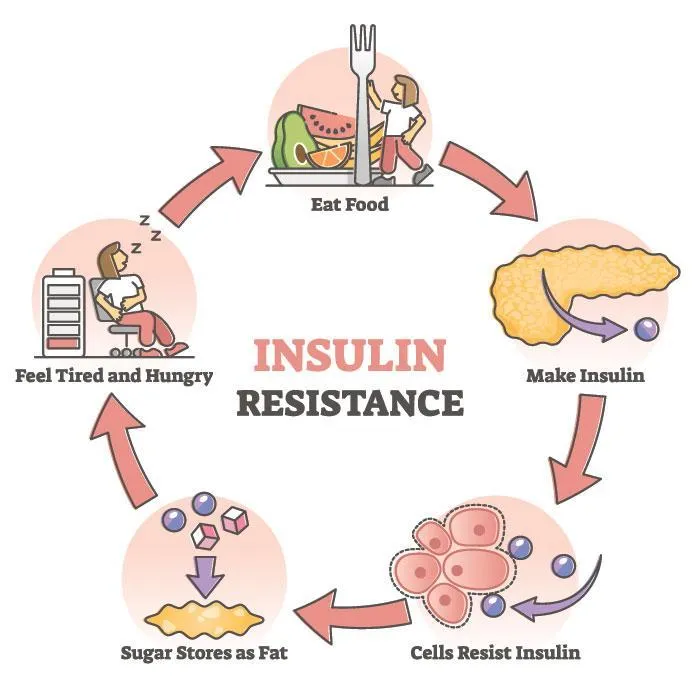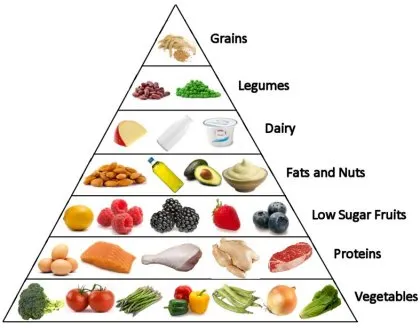
Metabolic syndrome (MS) is a term used to describe a group of associated risk factors, that when combined, increase a person’s chances of contracting conditions such as heart disease, stroke, and diabetes (Kenney, Wilmore, & Costill, 2012). Said risk factors include a large waistline, high triglyceride levels, low high-density lipoproteins, high resting blood pressure, high levels of blood sugar/insulin resistance, and low-grade chronic inflammation (Kenney et al., 2012; National Heart, Blood, and Lung Institute, 2017). For the purposes of this post, the etiology of type 2 diabetes (T2D) will be explored, its relationship to insulin resistance, and nutritional interventions to help mitigate such a disease.

Usually under 30. Rapid onset. Normal or underweight. Little or no insulin. Ketosis common. Make up 15% of cases. Autoimmune plus environmental factors. Low familial factor. Treated with insulin, diet and exercise. Usually over 40. Gradual onset. 80% are overweight. Most have insulin resistance. Ketosis rare. 85% of diagnosed cases. Part of metabolic insulin resistance syndrome. Strongly hereditary. Diet & exercise, progressing to tablets, then insulin.

T2D is a common manifestation of MS, is found in approximately 80% of diabetes cases, and is largely characterized by an aberration in insulin sensitivity (Reisner & Reisner, 2017). Specifically, the pancreas operates normally by releasing insulin in response to elevated glucose levels. However, tissues become relatively insensitive to the action of insulin (helps store glucose), a condition known as insulin resistance (Reisner & Reisner, 2017). As insulin resistance progresses, insulin eventually becomes unable to control blood glucose levels, and hyperglycaemia (elevated blood glucose) ensues, also known as T2D (Reisner & Reisner, 2017).

T2D is largely hereditary (children of parents with T2D have a 70% chance of becoming diabetic). However, environmental and nutritional factors play a heavily influential role in controlling said disease. One nutritional intervention includes very low carbohydrate/ketogenic diets (VLCKDs). Paoli, Rubini, Volek, and Grimaldi (2013) suggested slowly presenting foods, which supplied energy (i.e., proteins and fats) while being relatively low in sugars. Such a process could allow blood glucose levels to slowly decrease without the need for insulin, minimizing its need and influence (Paoli et al., 2013). It has been suggested that providing lower carbohydrate foods would encourage an adaptive change in substrate utilization from glucose to ketones (beta-hydroxybutyrate, acetone, and acetoacetate) derived from the breakdown of triglycerides. Such a process is postulated to help mitigate insulin resistance and/or type 2 diabetes (Paoli et al., 2013).

Several studies outlined by Mobbs, Maistaitis, Isoda, and Poplawski (2013) noted the efficacy of VLCKDs in managing diabetes mellitus. The researchers provided even greater understanding to macronutrient ratios within such diets; Mobbs et al. (2013) compared two isocaloric VLCKDs in which one group of subjects ate higher protein and lower fats fats, while the other group of subjects consumed higher fats and lower protein. In both groups, subjects lost weight (another intervention to improve insulin resistance).
However, the VLCKD group who consumed lower total protein and higher fats had even lower blood glucose levels, improved glucose tolerance, and a faster reduction in hepatic (liver) glucose output compared to the high protein/low fat VLCKD group (Mobbs et al., 2013). Such information shows the benefit of VLCKDs in general, and the potential added benefits of lower protein/higher fat low carb diets.
In conclusion, evidence suggests that T2D can be controlled through the manipulation of macronutrient ratios (carbohydrates/fat/protein), helping manage and/or mitigate symptoms and complications associated with the disease.
References
Kenney, W.L., Wilmore, J.H., & Costill, D.L. (2012). Physiology of sport and exercise (5th ed.). Champaign, IL: Human Kinetics.
Mobbs, C. V., Maistaitis, J., Isoda, F., & Poplawski, M. (2013). Treatment of diabetes and diabetic complication with a ketogenic diet. Journal of Child Neurology, 28(8), 1009-1014.
National Heart, Blood, and Lung Institute (2011). What is metabolic syndrome? Retrieved April 4, 2017, from http://www.nhlbi.nih.gov/health/health-topics/topics/ms/
Paoli, A., Rubini, A., Volek, J.S., & Grimaldi, K.A. (2013). Beyond weight loss: a review of the therapeutic uses of very low-carbohydrate (ketogenic) diets. European Journal of Clinical Nutrition, 67, 789-796.
Reisner, E. G., & Reisner, H. M. (2017). An introduction to human disease: Pathology and pathophysiology correlations (10th ed.). Burlington, MA: Jones & Bartlett Learning.
-Michael McIsaac
